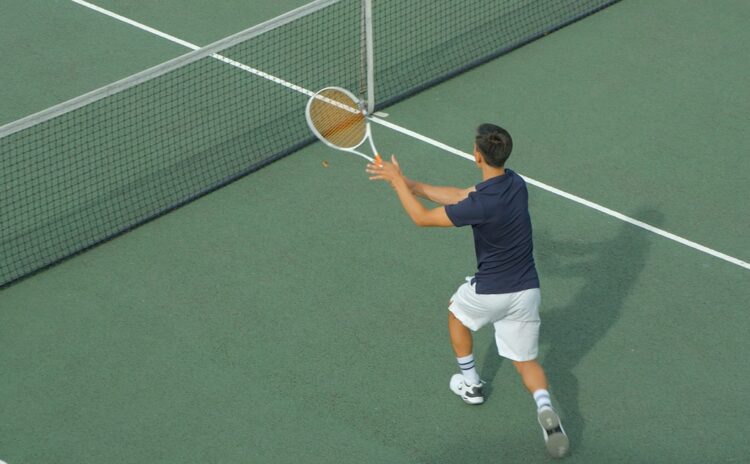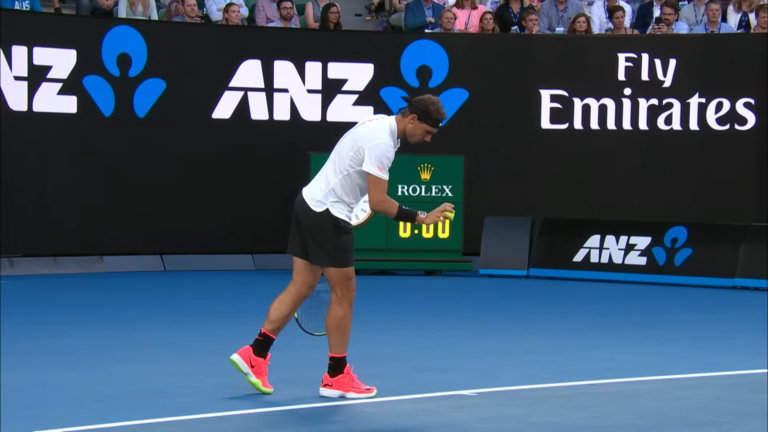Tennis is more than just a sport; it’s a language, a culture, and yes, it has its own unique scoring system. One term that often puzzles newcomers is “love.” No, it’s not about romantic feelings on the court; it’s a score term that has its own history and significance. In this blog post, we’ll explore what “love” means in tennis, its origins, and how it fits into the tennis scoring system.

What Does Love Mean In Tennis Scoring System?
It’s crucial to understand how the tennis scoring system works, and the term “love” signifies that a player has zero points in a game. This unique terminology is used to announce scores and is integral to the game’s lexicon. For example, if both players have not yet scored, the game starts at “love-all.” As points are won, the score may change to “15-love” or “30-love,” indicating that one player has scored while the other remains at zero.
Love Definition In Tennis

“Love” is a term used to indicate that a player has not won any points in a specific game. It’s a word that you’ll often hear in score announcements, such as “love-15” or “30-love,” to denote the point status of the players involved. This term is unique to tennis and serves as a standardized way to communicate scores, not only among players but also for referees and spectators.
While “love” may sound like an odd choice for representing zero, it’s deeply rooted in the game’s history and culture. The term is believed to have originated from the French word “l’oeuf,” meaning “the egg,” which was later anglicized to “love.” Its usage provides a nod to the sport’s rich history, adding a layer of tradition that has been carried through centuries of play.
Love: A score of zero
This term is universally recognized in the sport, facilitating clear and efficient score announcements. Whether you’re a player, an official, or a fan, hearing “love” in the context of a tennis match immediately signals that a player is striving to move away from a zero-point status.

When to Use Love Scoring
It is most commonly used at the beginning of each game when both players start with zero points, announced as “love-all.” As the game progresses, “love” continues to be used in combination with other scores to indicate a player’s point status. For example, if one player has 15 points and the other has none, the score would be announced as “15-love.”
However, it’s worth noting that “love” is not used during tiebreakers, which have a different scoring system altogether. In tiebreakers, the point count starts from zero and ascends numerically without the use of traditional tennis terms like “love,” “deuce,” or “advantage.”

Love-All
“Love-all” is the term used to announce the starting point of each game in a tennis match, signifying that both players are at zero points. It sets the stage for the game, creating a moment of equilibrium before the competition for points begins.
Other Unique Tennis Terms
It is natural for me since I am a tennis coach for a longer time, but a newbie may find it difficult to keep track of the game with so many unique terms. Here is the explanation of them:
| Term | Meaning | Significance in a Match |
|---|---|---|
| Deuce | Both players have 40 points | A critical juncture, requiring two consecutive points to win the game |
| Advantage | One player wins the point after deuce | Indicates who has the upper hand in breaking the deuce deadlock |
| Ace | A serve that is not touched by the opponent | Adds a point to the server, often a sign of serving prowess |
| Double Fault | Two unsuccessful serves in a row | Gives a point to the opponent, can be a momentum changer |
| Break Point | A point that, if won by the receiver, wins the game | A high-stakes moment, often a game-changer |
| Let | A serve that hits the net but lands in the service box | Requires a serve to be retaken |
| Rally | A sequence of shots between players | Can be a test of skill, stamina, and strategy |
| Lob | A high, arching shot | Used to counter net play or change the pace |
| Volley | Hitting the ball before it bounces | Common in doubles and net play |
| Smash | A powerful overhead shot | Often used to finish a point decisively |
Psychological Impact
When a player is at “love,” it can either be a motivator to rally back or a mental hurdle that needs overcoming. The psychology of being at “love” can vary from player to player, but it undeniably adds an extra layer of complexity to the game.
Being at “love” can be a precarious position, especially in crucial games or sets. Players often employ specific strategies to climb back from a zero-point situation. Some may opt for safer, high-percentage shots to get on the board, while others might go for broke with aggressive plays. The chosen strategy often reflects a player’s mental state and overall game plan.
In doubles matches, the term “love” takes on additional significance due to the team aspect. When one team is at “love,” it’s not just an individual effort to score; it requires coordinated teamwork. Effective communication becomes even more crucial, as both players must work in tandem to move away from the zero-point mark.
FAQs
Why is the term “love” used in tennis?
In tennis, Love (i.e., a zero-point score) is a concept used to describe a score of zero. There is some controversy about how the current use of the term “love of the game” came to be. Although the most accepted explanation is that those with zero points were still competing for the “love of the game,” even though their score was negative.
What is the Tennis Rating System?
At every tennis match, each service is split up into two to three sets. When you win a set, you must win six games. The games are scored by zero through four, but the scores go from zero to forty. From Love, the beginning is 15 points, then 30 points, then 40 points, then the game stage, which wins the game.
In tennis, why do they say “Love” and “deuce”?
Love is zero. In tennis, the user’s score is given first, so “love-fifteen” means the server has no points, the opposition has fifteen. The tennis game progresses from Love to fifteen, up to thirty, and eventually to forty. If both players hit thirty, then thirty counts.
What is an advantage in tennis?
The current utility of this kind of scoring is known as “advantage scoring” (or “ads”). The half which wins the next level after deuce is said to have the advantage. If the team that prevails with the next point has a two-point advantage, that team has won the game.
Will a tennis player catch the net?
A player must never hit the net until the point has expired. A player should not strike the net while the ball is still in play. And if a player’s body, clothing, or racket touches the net or net posts during play, the ball will be retaliated.
Summary
I’ve always found the unique language of tennis to be as fascinating as the game itself. In this article, we’ve gone beyond the basics to explore the term “love” from various angles—its historical roots, its psychological impact, and its role. Thank you for joining me on this journey through the linguistic intricacies of the game I love.
Related:
- 18 Best Tennis Racquets 2024 - Exclusive Reviews &…
- 20 Best Tennis Shoes 2024 - Stylish and Athletic
- Top 19 Best Tennis Bags 2024 [Unbiased Reviews]
- 15 Best Tennis Balls 2024 - USTA and ITF Approved
- 10 Best Tennis Ball Machine 2024 - Perfect for Solo Players
- 10 Best Tennis Shoes for Men 2024 - Exclusive Reviews











